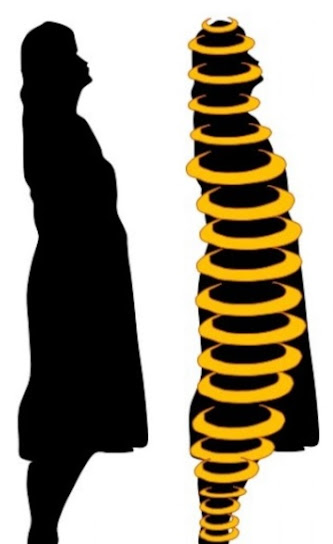[Youngjun Ham's mind PT] How Fixed the Broken Spine Without Surgery(chosun.com)
# If you were hit by a car traveling at 90 kilometers per hour and suffered a fractured vertebrae, would you believe that you healed naturally through meditation without the help of modern medicine?
It actually happened, and she wrote about it, became a best-selling author, and an educator and entrepreneur sharing her natural healing methods with the public.
Joe Dispenza (1962-) was 23 years old in 1986 when he was riding his bike in a triathlon and was hit by an SUV and thrown to the pavement. Multiple spinal compression fractures. Six vertebrae were broken and twisted, and if she didn't have surgery within three days, she would be paralyzed for life. The surgery involves placing a 20- to 50-centimeter-long steel rod (Harrington rod) in her spine, and even if she heals, she will have a hard time living a normal life.
After much deliberation, he decided against the doctors' suggestion and decided to take matters into his own hands. In fact, Dr. Dispenza was already running a clinic in Southern California as a chiropractic specialist who uses spinal manipulation to heal without drugs.
A form of sports medicine, chiropractic is a manual treatment of abnormalities in the nervous, muscular, and skeletal systems, based on the premise that all disease stems from compression of the spinal nerves due to vertebral misalignment. In other words, Dispenser was an expert when it came to his back. What's more, he had been practicing martial arts and yoga for a long time.
Eam Taekyoung : Chiropractic believes that all diseases stem from pressure on the spinal nerves due to vertebral deviation. I believe that posture, stress, and food are the roots of all diseases, including cancer, except those caused by viruses. I also believe that almost all degenerative diseases, such as lung disease, cardiovascular disease, brain disease, and neurological disease, are caused by long-term accumulation of forward head protrusion and V-shape footed walking.
He was a firm believer in the body's natural ability to recover. The ability of the body to heal itself is the philosophy of chiropractic and the theoretical foundation of holistic practitioners.
The power that created the body heals the body." He was discharged from the hospital and began his rehabilitation in a bright room at a friend's house.
At first, he ate little raw food. This was so that much of the energy used for digestion could be better used for wound healing.
I meditated and self-hypnotized for an hour three times a day, morning, noon, and night. In my mind's eye, I pictured each vertebra in my spine and envisioned a perfect spine. He also practiced reiki, a common practice in Eastern medicine. She would place the hands of visiting relatives on her wounds to channel their unconscious energy.
Finally, I applied physical stimulation to the wound to replenish the calcium in the broken bones. An inclined table was placed next to the bed, and he carefully rolled over, constantly stimulating his spine.
After six weeks, I started swimming, feeling my body recovering quickly. At first, I floated on top of the water while lying on a chaise longue, wearing thick clothes that immobilized my body. Later, he learned to float in the water and then stand, and later he was able to swim with his whole body.
By week 8, he was able to crawl on bare ground and progressed to walking, sitting, and bathing on his own. By week 12, he was able to lift dumbbells and finally walked for an hour on his own, no longer needing therapy.
# The key here is his meditation and self-hypnosis. He spent three hours a day visualizing his bones fusing and healing in his head. This is the kind of "mental rehearsal" that athletes often do. It takes a lot of mental focus and energy. Eventually, he overcame his illness and became a "meditation evangelist".
Eam Taekyoung : I think the above spinal imagery, mental rehearsal, or mental vision can be explained more scientifically as 'neurosensory perception' and 'attentional concentration effect'.
Postural Science: Perceiving body specificity through neurosensory isokinetic tornado flight
His book, [You Are the Placebo] became a New York Times bestseller and has been translated into Korean. He travels the U.S. and around the world giving lectures, courses, and testimonials of people who have been healed of mental and physical illnesses by him. His $2,299 retreats sell out in a matter of days.
While he has many supporters, critics call him a "pseudoscientist who sells meditation as a cure-all," and the mainstream U.S. media hasn't taken him seriously.
# But when you take a closer look at his theories, they don't seem too far-fetched.
Perhaps the reason he is criticized is that he claims many of the theories already published in neuroscience, brain science, epigenetics, and quantum physics as if they were his own scientific theories, and sometimes he seems to make money by "cosplaying" as a spiritual guru.
In any case, the idea that we can create a new life by changing our minds and brains with our own consciousness, beyond our genes and environment, is hopeful in today's complex world.
In the end, his story is in line with the old saying, "If you have an intellect, you have a heart. It also reminds me of the saying that the "Iron Lady," former British Prime Minister Margaret Thatcher (1925-2013), lived by since she was a child.
"Thoughts become words, words become actions, actions become habits, habits become character, and character becomes destiny."







